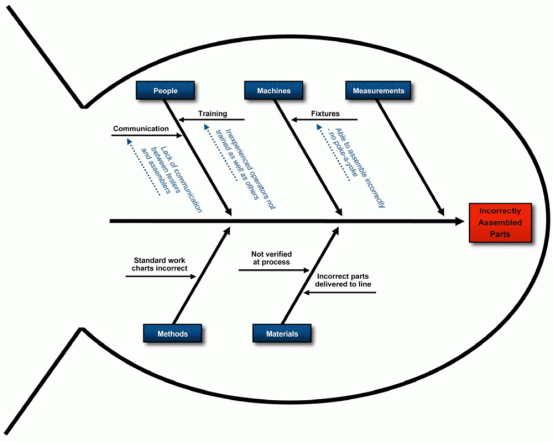Problem Solving Techniques for Process Industry Professionals
Problem solving and decision making are key facets of any successful operation. Engineers are blessed with typically excellent logic skills. But sometimes these innate skills require channeling; especially when working through problems with a team of colleagues. So PIF has looked at five problem solving solutions that will take your decision making to the next level.
5-Why Problem Solving Technique

The 5-Why Problem Solving technique is said to have been popularised in the 1970s by the Toyota Production System. “When you have a problem, go to the place where the problem occurred and ask the question 'Why' five times,” say Reliable Plant. “In this way, you will find the root causes of the problem and you can start treating them and rectifying the problem.”
It's a good tool to start your problem solving process but often requires additional follow-on methods. Mind Tools add, “The 5 Whys strategy is an easy and often-effective tool for uncovering the root of a problem. Because it's simple, you can adapt it quickly and apply it to almost any problem. Bear in mind, however, that if it doesn't prompt an intuitive answer, you may need to apply other problem-solving techniques.”
Ishikawa Diagram
The Ishikawa Diagram – also known as the Fishbone or Cause and Effect Diagram – is a graphical aid to determine the relationship between a problem and its potential causes.

Reliable Plant say, “One of the most effective ways of constructing such a diagram is to brainstorm potential causes in a team environment. For example, a cause and effect diagram might be used to determine possible causes of a recurring defect in a manufacturing process.”
The diagram resembles the skeleton of a fish, with the problem on the right side. They continue, “The major cause categories are written in the boxes on the left side of Cause and Effect Diagram. Summarize the major causes under the categories. These categories are usually Methods, Measurements, Machines, Materials and People.”
Plan, Do, Check, Act (PDCA)

The Plan-Do-Check-Act (PDCA) Cycle ensures that ideas are appropriately tested before committing to full implementation. “It begins with a Planning phase in which the problem is clearly identified and understood,” say Mind Tools.
“Potential solutions are then generated and tested on a small scale in the 'Do' phase, and the outcome of this testing is evaluated during the Check phase. 'Do' and 'Check' phases can be iterated as many times as is necessary before the full, polished solution is implemented in the 'Act' phase,” they add.
Simplified Failure Modes and Effects Analysis
Simplified Failure Modes and Effects Analysis (SFMEA) is a recognised industry approach for top-down analysis of a design. According to Reliable Plant, “You start by considering each component or functional block in the system and how it can fail, referred to as failure modes. You then determine the effect of each failure mode, and the severity on the function of the system.
“Then you determine the likelihood of occurrence and of detecting the failure. The procedure is to calculate the Risk Priority Number, or RPN, using the formula: RPN = Severity × Occurrence × Detection.” It's then a case of figuring out corrective actions to either reduce occurrence or increase detection and ultimately bring down the RPN as low as possible.
These four tools, when allied with common sense and logic, can be be a potent force for change when your team is dealing with any manner of problem solving situations that can crop up on a daily basis. Visit Reliable Plant or Mind Tools for more ideas.
Get the latest process industry news
Interested in receiving even more industry-leading news from Process Industry Forum delivered directly to your inbox? Then sign up to our free newsletter. Bringing you the latest news, trends, innovations and opinion from across the process industry, our exclusive newsletter gives you all the industry insights of the moment in one, easy-to-digest bulletin. Stay ahead of the competition with regular process industry news instalments from PIF.
